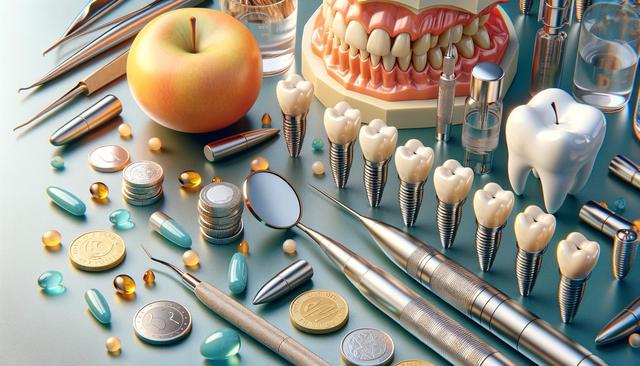Factors Influencing Dental Implant Costs
In 2025, the cost of dental implants is shaped by a combination of clinical, technological, and geographical factors. While patients often seek straightforward pricing, the reality is that several variables influence the final cost. These include the type of implant used, the experience of the dental professional, and the location of the clinic. Additionally, pre-operative and post-operative care often play a significant role in the total expenditure.
Key factors include:
- Type and material of the implant (e.g., titanium vs. zirconia)
- Need for additional procedures such as bone grafting or sinus lifts
- Geographical location, with urban centers typically commanding higher fees
- Technology used, including 3D imaging and guided implant surgery
- Expertise and reputation of the dental provider
Each of these elements can add to the base cost of the implant, making it essential for patients to consult detailed treatment plans before committing to a procedure.
Average Price Range for Implants in 2025
The average cost for a single dental implant in 2025 ranges from $3,000 to $6,000 in many parts of the United States. This includes the implant post, abutment, and crown. However, patients should be aware that this figure can vary widely depending on individual needs and treatment complexity. In more affordable markets or countries with lower healthcare costs, prices can be significantly less, even when maintaining high standards of care.
Cost breakdown for a typical implant procedure:
- Consultation and diagnostics: $100 – $500
- Implant surgery: $1,500 – $3,000
- Abutment and crown: $1,000 – $2,500
Additional procedures such as bone grafting can cost an extra $300 to $2,000, depending on the extent of the work. As such, patients should always request a full quote that includes all necessary components of the treatment to avoid unexpected expenses.
Insurance and Financing Options
Many dental insurance plans in 2025 still do not fully cover dental implants, although some offer partial reimbursement for specific parts of the procedure. This makes financing options more important than ever. Dental offices increasingly partner with third-party financing companies to offer payment plans that can make implants more attainable for patients who might otherwise delay treatment.
Common financing options include:
- Monthly installment plans with low or no interest for qualifying patients
- Medical credit cards designed specifically for healthcare expenses
- In-house financing from dental clinics
- Health savings accounts (HSAs) or flexible spending accounts (FSAs) for eligible expenses
Patients should carefully review the terms of any financing agreement and consider total repayment amounts when calculating the affordability of dental implants through these methods.
Global Trends and Cost Comparisons
Dental tourism continues to be a viable option for patients seeking more affordable implant procedures. In 2025, countries in Central and South America, Eastern Europe, and parts of Asia offer competitive pricing for implant treatments, often at rates 30% to 70% lower than those in the U.S. or Western Europe. However, patients should balance cost savings with considerations of travel, recovery time, and the reputation of the clinic abroad.
Popular destinations for affordable implant procedures include:
- Mexico
- Thailand
- Hungary
- Colombia
- Turkey
When considering international treatment, it’s crucial to research the qualifications of dental professionals, clinic certifications, and patient reviews. Additionally, factoring in travel accommodations and potential follow-up visits can help patients make informed decisions about whether overseas care is right for them.
Tips for Managing Implant Costs Effectively
Managing the cost of dental implants in 2025 requires careful planning and informed decision-making. Patients can take several steps to reduce expenses while ensuring quality care. First, obtaining multiple quotes from licensed professionals provides a clearer picture of the market rate. It also helps identify practices that may offer bundled services or promotions.
Other strategies include:
- Asking about off-peak discounts or seasonal offers
- Using dental school clinics where supervision is provided by experienced professionals
- Exploring community health programs that subsidize dental care
- Prioritizing preventative care to avoid the need for more complex procedures later
Ultimately, patients should not compromise on safety or quality in exchange for lower costs. Investing in a well-executed implant procedure can lead to long-term oral health benefits and fewer complications in the future.
Conclusion: Planning Ahead for a Confident Smile
Dental implants in 2025 remain a valuable solution for those seeking a durable and natural-looking tooth replacement. While the costs can be significant, understanding what influences pricing and exploring financing options can help make the procedure more accessible. Whether choosing local care or exploring treatment abroad, patients benefit most when they are informed, prepared, and proactive about their dental health journey. By prioritizing quality and planning ahead, achieving a confident and functional smile becomes a realistic goal for many.



Leave a Reply